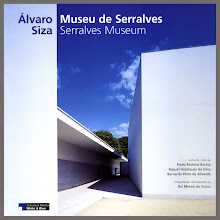..

Leica R5 + Elmarit 135mm + 16462 focusing mount + 14167 adapter
(image complements my post about the Elmarit + Visoflex)
The Leicaflex SL always was one of my dream cameras!
My heart throbs a little faster anytime I see that "thick as a brick" camera, which most apparent attributes seem to be simplicity and robustness.
Its rather classical and understated design appeals very much to my taste, so much that, up to this day, I find the Leicaflex SL2 to be the most wonderful of all 35mm SLRs!
Then again, I refrained from acquiring Leica reflex cameras, simply because I preferred Leica rangefinder cameras!
These M-cameras alone, represented a barely justifiable investment for my usually empty taxi driver wallet...
Restricted funds schrank my insanity!
 Second version of the R5, after Leitz became Leica
Second version of the R5, after Leitz became Leica
(Wonderful depth of field lever. First R5 version had Leitz red logo on the left, R5 on the right. Some other small modifications)
I have a "
Leica Preisliste - gültig ab 1. Oktober 1990", in front of me.
The price of the Leica R5 was quoted with 3.598 DM (something on the order of 1.800 Euros. For the body alone,
versteht sich...).
Maybe the only benefit of the digital "revolution" that I can discern for us, film photographers, is that (used) film equipment is much more affordable these days!
Considering that Leitz ceased production of the Leicaflex SL2 in 1976, I decided to try a somewhat newer R model: the almost pristine camera that you can admire on these images is from 1991, a "young blood", so to speak...
Exquisite cameras are indubitably like delicious Port: they get better with age and usage!
 Notice film type window, thumb's rest (second version only, not sure if I like it), eyepiece blank, eyepiece adjustment wheel (+- 2 dioptres)
Notice film type window, thumb's rest (second version only, not sure if I like it), eyepiece blank, eyepiece adjustment wheel (+- 2 dioptres)
I have to concede that, purist as I am, I would have maybe preferred an all-mechanical camera, like the Leicaflex or the Leica R6. Electronic gear just seems to frighten me!
Bearing in mind that all my Leica Ms, as well as most of my gear, are all "old-fashioned" mechanical cameras, the majority of them without an exposure meter built-in!, I concluded that some sort of comfort could do me no harm... Actually, there are circumstances when automatic exposure is a blessing!
Asking Mr. Nunes's opinion, which I very much respect and trust - his words are sacred to me!, I was astonished that he promptly replied "the R5", when I asked him which was his Leica R of choice.
Mr. Nunes is the very competent repairperson of Leica Portugal, also specializing in Hasselblad and other mouth-watering names of the photo industry.
I trust him my valuable cameras for many years now!
 Intuitive to use controls and levers. Program selector with locking button above shutter speed dial
Intuitive to use controls and levers. Program selector with locking button above shutter speed dial
My main concern was the exposure accuracy of the built-in light meter: the dual exposure system - integral and selective metering option, was intriguing me. Could I trust it, so used as I am to hand-held metering?
Suffice it to say that I find it to be outstanding! Selective metering on the Leica R5 is absolutely superb!!
As a matter of fact, the whole camera surpasses all my expectations, and is a joy to use! Everything works
butterweich, typical Leica!
The apparatus is very well-balanced, instantly giving you that confident and trustful feeling of having high-grade stuff in your hands.
The finder is possibly the best one that I saw on any SLR, giving a crisp, easy to focus image.
Thanks to it, I could see that the lamp in our living-room has some cobwebs on it. I couldn't detect them with the Canon EOS-1n!
At first I thought that the focusing screen was scratched...
Please, bear in mind that I am using this camera "the hard way", that is without lenses with automatic aperture.
In fact, the only lenses I used so far, are lenses made for the Visoflex: 135mm/2.8 Elmarit (1979), 200mm/4 Telyt (1961), 280mm/4.8 Telyt (1978), all of them with Leitz 14167 adapter ring, and the 400mm/6.8 Telyt (1973), also a non-automatic lens.
None of these lenses is "high-speed"...
None of them can be called "modern"...
I am eager to get my hands on a Summicron-R 50mm, or similar, to fully test the potential of this excellent, intuitive camera!
Dislikes?
Not easy to find, but here I go:
- maybe a little too small, even for my small hands...(I believe that it must balance very well with a Motor Drive R... But there I go again, making easy things complicated again!).
- For the original price, the leatherette could be a little softer and provide a more exquisite feeling...
That's all?
C'mon, give me a break! Let me have my fun and enjoy!
P.S.: Some days ago, I posted several photographs made with the combo displayed above. Some months ago, I also posted about the Elmarit 135mm used with goggles on a Leica M, and with Leitz focusing mount 16462 on the Visoflex.
Should you be curious, please take a look on these former posts.
Good night, sleep tight!
..





















































+copy.jpg)
+copy.jpg)
+copy.jpg)
+copy.jpg)
+copy.jpg)
+copy.jpg)